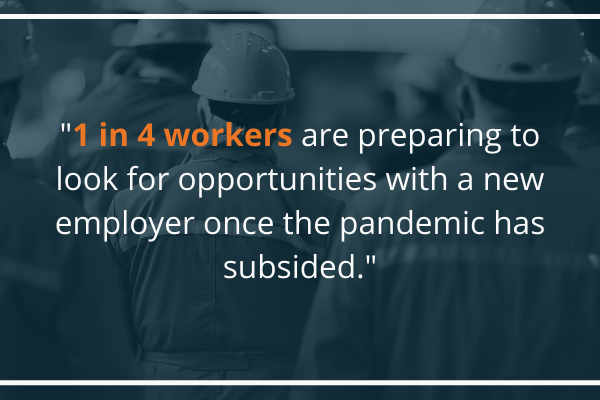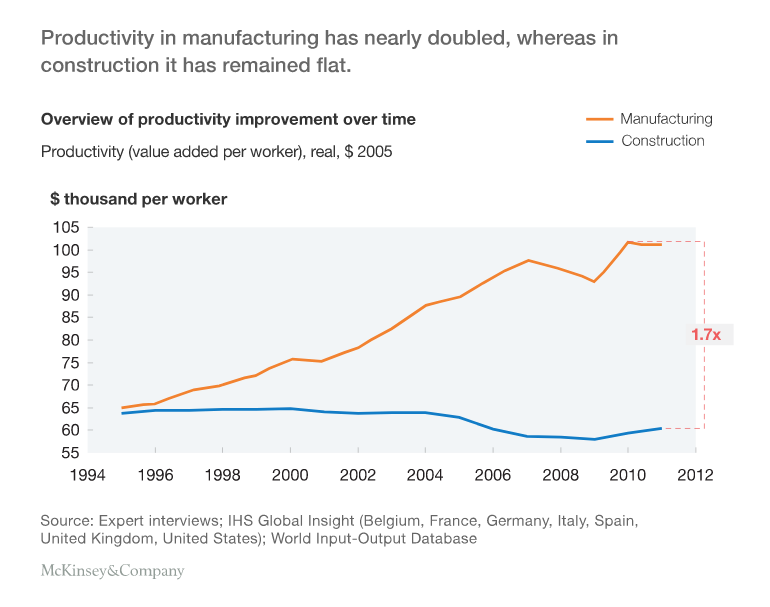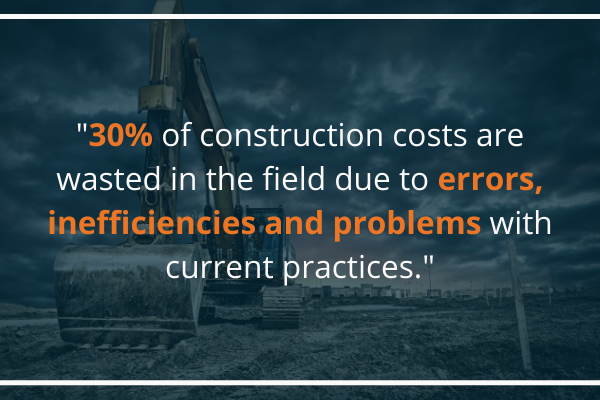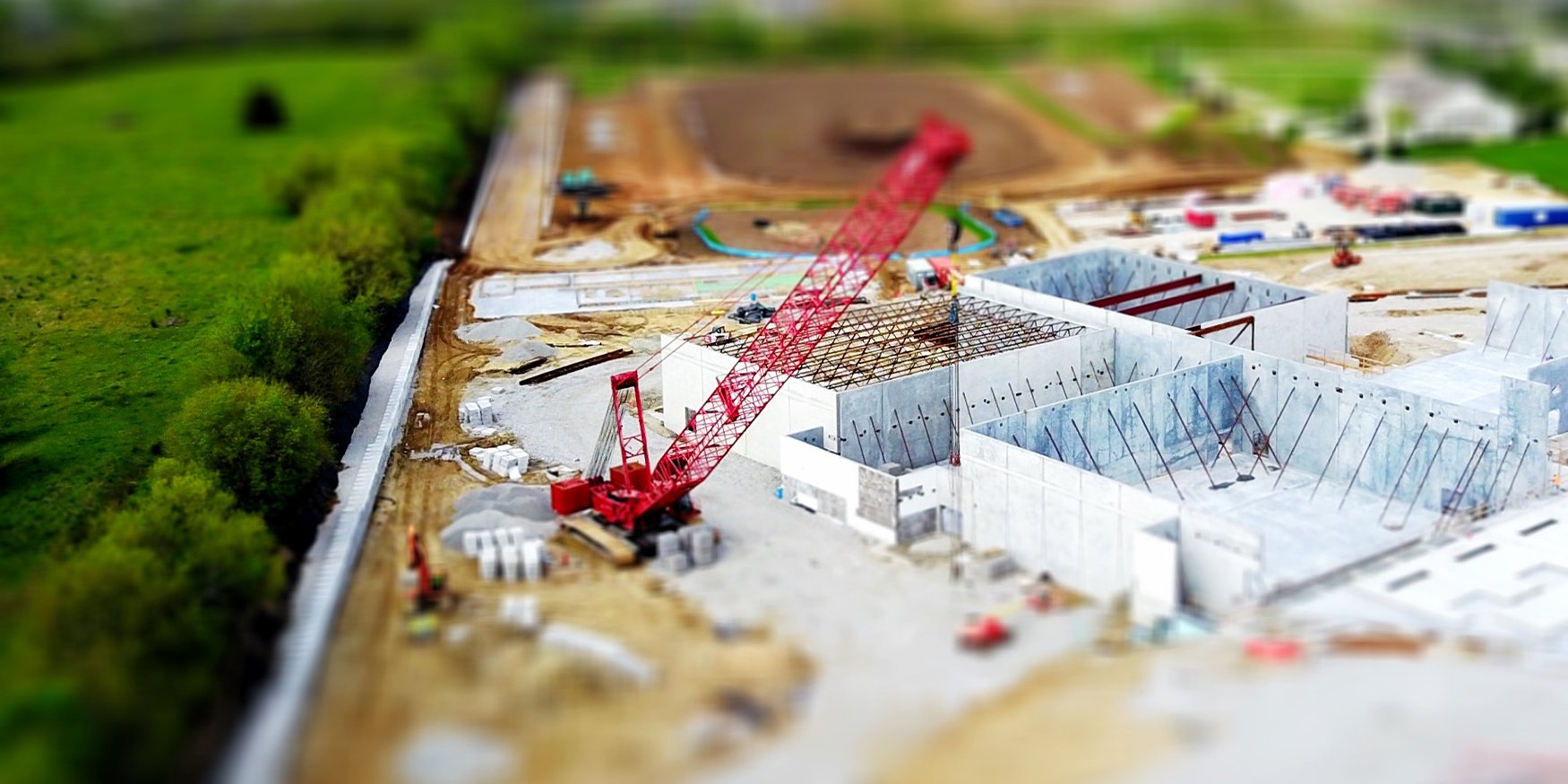Between a widespread labor shortage, ever-changing Covid-19 restrictions, and the price of oil finally rising above $80 per barrel...it seems we're still living in "unprecedented" times.
As much as we're tired of hearing about the "unprecedented" times, it still rings true. In the US alone, there were 9.3 million new job openings in April 2021. And while the demand for workers seems to be higher than ever, it feels as if they're nowhere to be found.
During a recent one-week period, there were 175 active drilling rigs in Canada. Compare that to the same one-week period in 2019, when there were only 75 active drilling rigs. Add to oil hitting a seven-year high recently, and you can see why there's a hiring frenzy across the continent.
So how are you, as a business owner or hiring manager supposed to keep up? In this blog we'll discuss:
- How to attract new talent using three different strategies and, because hiring more people isn't always the answer,
- How you can operate more efficiently, with fewer people.
Your job doesn't need to be harder simply because the world loves dubbing things as "unprecedented".
Option 1: Finding Workers

Labor shortages aren't new, but because of Covid-19, many workers are either planning to switch jobs or already have. In fact, according to this article, "1 in 4 workers are preparing to look for opportunities with a new employer once the pandemic has subsided" and more than 40% of participants in a global survey said they're considering leaving their current employer. Based on these facts, many are calling this (sorry to use the word again) unprecedented era the "Great Resignation". And it's aptly named seeing how in August alone, 4.3 million Americans quit their jobs. To put that in perspective, it's the equivalent of everyone in Los Angeles and Anaheim quitting their jobs.
So what can you do to find and keep workers?
The obvious answer is to simply offer to pay more than your competition. While this is by far the most expensive option, it's also the quickest way to solve the problem.
But many companies have already increased wages and added more perks and benefits. If that's the case, or if increasing wages simply isn't an option, then try in-house training. Back in the day, workers were trained on-the-job by unions who offered the skills workers needed. It used to be frowned upon to provide in-house training because of the time and effort it took. However, many workers now view in-house training as a benefit and proof that a company cares about them. In fact, drilling companies such as Precision Drilling run three training centers to train workers. Located in Houston, Texas, and Nisku, these centers provide hands-on training to workers. Why does this appeal to workers? In an industry that can be dangerous, safety is a priority. Show your workers you care about them by providing them with the skills they need to safely complete their job - especially when the competition doesn't.
What else can you do? This takes us to what is perhaps the second-most loathed word of 2021- Pivot (we all know what the first word is). And we're not simply talking about Ross trying to fit his new couch into his apartment in "Friends". Pivoting is what we've all been encouraged to do lately. But in this context, you as a hiring manager can pivot by finding complementary skills in other industries. The concept here is that core skills are as valuable as credentials (or experience). The underlying skills that make a good baker or cashier, might also make them an ideal candidate for a well testing helper or survey assistant. This idea requires more thought and planning, but the opportunities are endless.
Option 2: Operate more efficiently with fewer people

Okay, so you've tried the ideas above and still no luck with hiring.
Here is where we can discuss how you can operate more efficiently with fewer people, therefore lowering your operating costs and increasing your margins. Having a 1% variance in operating costs can result in a six-figure impact on the bottom line - good or bad. So you can make a great deal of progress by optimizing your processes.
If you're in an industry where you have field operations (oil and gas services, construction, etc.), this is the section to focus your attention.
In the construction industry alone, lagging productivity costs the global economy $1.6 trillion per year, according to the McKinsey Global Institute. In fact, productivity in manufacturing has nearly doubled from 1994 to 2012, whereas in construction it has remained flat.

And what's more, "30% of construction costs are wasted in the field due to errors, inefficiencies and problems with current construction practices".

All this to say: your productivity matters. It matters to your bottom line.
It's time to go digital
Oil and Gas Services and Construction are two lagging industries when it comes to the adoption of technology. Implementing a Field Operations Management software like Aimsio can save your company hundreds of thousands of dollars simply by finding and repairing inefficiencies.
Here are a few categories you could see savings by implementing Aimsio:
1. Field Tickets, LEMs, or Timesheets
Let's start off with the obvious: when you have digital Field Tickets, LEMs, or Timesheets, you don't need to pay someone to drive the physical pieces of paper from job sites to the office. Additionally, there are no lost or misplaced tickets. Plus, no one needs to spend time manually entering data from tickets into a spreadsheet or system. And if that's not enough, you won't forget to bill back third party charges if you have a digital system. The time and money you spend on paper field tickets is costing you more than you think.
2. Reduce Invoice Turnaround Time
A digital system means that once a job is complete, you can turn around and invoice immediately. Data entered --> Accounting receives it. It's that simple. You can even upload invoices directly from Aimsio to systems like OpenInvoice or Cortex, eliminating more time spent on data entry and invoice configuration.
3. View Reports Same-Day
You can set up dashboards with all of the reports your heart desires. View reports on:
- Year to date key metrics
- Tickets registered but not invoiced
- Revenue by project and client
- Revenue by labor
- Delays between job ticket and job invoice
Reports give you the power to optimize and eliminate revenue leakage. Be in the know about where you are lacking efficiency.
4. Resource Optimization
We're talking both people and equipment here.
If you have a need for 20 people but you only have 10, Aimsio gives you the power back to complete those jobs.
Don't pay people to do data entry, or to translate tickets into invoices. Optimize your organization so that you're only paying for billable hours. When you execute with fewer resources you can reinvest the extra billable resources into billable hours, not in admin processes, which are revenue draining. After all, isn't generating revenue the goal?
Let's wrap this up
We've talked about a lot here today, and we wouldn't blame you if you tapped out now. But in case you're interested in reading more on any of these topics, take a look at these articles:
- Why the Construction Industry Can't Afford to Ignore Digital Trends
- Two Approaches to Recruiting Workers Without Raising Wages
- How To: Sample Field Ticket Template
- Digitizing the Right of Way: Pipeline Construction Software
But if you're ready to skip to the good part, simply schedule a demo with our team and we'll show you how you can truly do more with less, using Aimsio.








.png?width=150&name=aimsio-white-430x88%20(1).png)
Submit a Comment